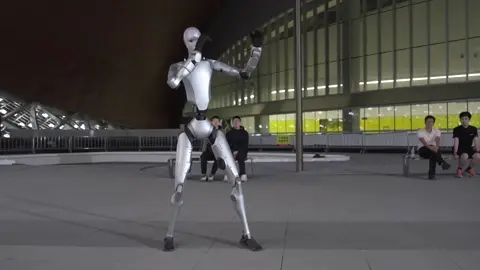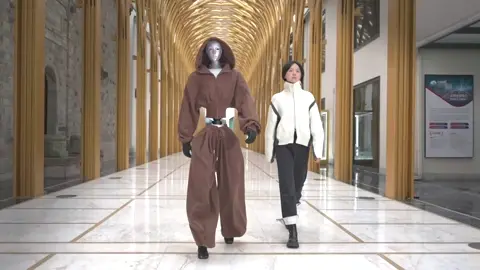Unitree Robotics has unveiled its latest humanoid robot, the H2, a full-sized bipedal machine priced at USD 29,900. The model combines industrial-grade engineering with a refined exterior design that the company describes on its website as “streamlined elegance.”
The launch marks a shift in Unitree’s design language. The H2’s head has been reshaped to appear more humanlike, with smoother contours and a bionic facial structure integrated with a dual-eye camera system for stereo vision. According to the company, this redesign aims to balance form and function, positioning humanoid robots as both approachable and efficient.
Standing 1.82 meters tall and weighing about 70 kilograms, the H2 features 31 degrees of freedom: six per leg, seven per arm, and three at the waist. Each limb is powered by internal rotor PMSMs (permanent magnet synchronous motors), generating up to 120 newton-meters of torque in the arm joints and 360 newton-meters in the legs. The frame is built from aircraft-grade aluminum, titanium alloy, and high-strength engineering plastics to optimize the strength-to-weight ratio.

Power comes from a lithium battery with a capacity of 15 ampere-hours, offering up to three hours of continuous operation. The H2 supports Wi-Fi 6 and Bluetooth 5.2, includes voice interaction via an array microphone and speaker, and offers modular computing options ranging from Intel Core i5 and i7 processors to Nvidia’s Jetson AGX Thor, which delivers up to 2070 TOPS (tera operations per second) of artificial intelligence compute.
A variant, the H2 EDU, targets research and academic users. It supports secondary development, customizable compute modules, and includes a 12-month warranty, compared with eight months for the standard version.
Beyond its technical profile, the H2 reflects Unitree’s effort to redefine its robotics aesthetic. The company’s “streamlined elegance” initiative emphasizes smoother and more humanlike exteriors, mirroring a broader industry trend to humanize robots designed for social or domestic settings. Whether consumers will favor humanlike designs or prefer more mechanical forms, however, remains uncertain as humanoid robots gradually approach commercial viability.

At under USD 30,000, the H2 is among the most affordable humanoid robots on the market, significantly undercutting models from both domestic and international peers. The pricing aligns with Unitree’s broader strategy of accessibility, which has helped it capture an estimated 60% share of the global quadruped robot market through models such as the Go2.
Competition, however, is intensifying. In China, Noetix Robotics recently introduced Bumi, a smaller humanoid robot with limited mobility but a lower price of RMB 9,998 (USD 1,400), about one-third the cost of the H2. The expanding range of models underscores how developers are racing to define the next mass market robotics platform—one that combines dexterity, safety, and a design suited to coexist in human environments.
